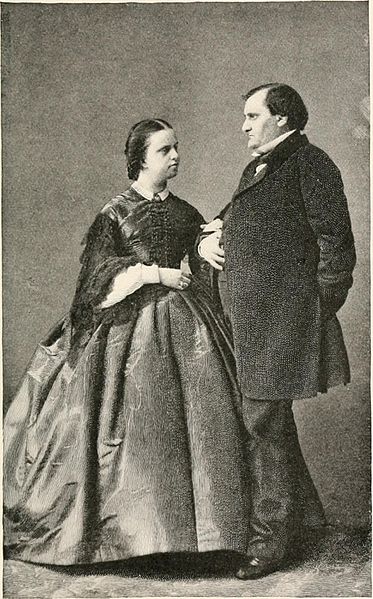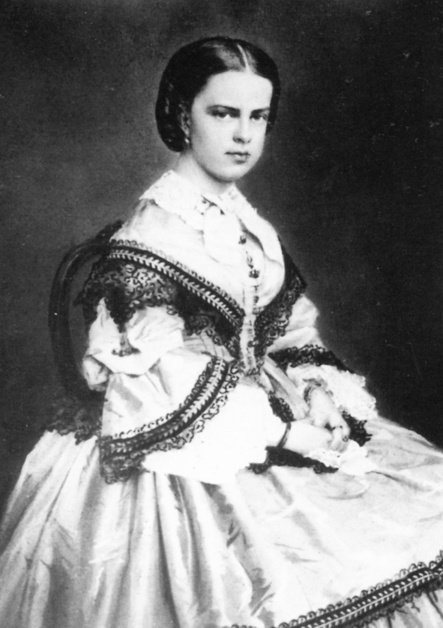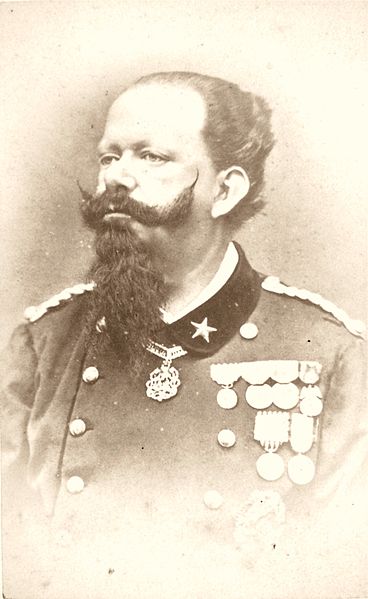by Antonio Borrelli
Maria Clotilde of Savoy is one of the most striking examples of how to achieve union with Christ while remaining in the world in environments which by their nature lead instead to distraction, pride of power, luxury and a worldly lifestyle, things once usually abundant in the royal and imperial courts of Europe.
She was born in Turin on 2 March 1843, the eldest of eight children of King Vittorio Emanuele II and Queen Maria Adelaide of Austria. From her parents and grandparents, Carlo Alberto and Maria Teresa, rulers of Piedmont and Sardinia, she received an excellent religious education and was attracted to Jesus from an early age. In order to increase her love of Christ, she read and assimilated the writings of Bourdalone, Father Croiset, and Massillon.
As her mother died prematurely, she took an interest in helping her orphaned siblings. On 11 June 1853, in the castle of Stupinigi she received her first Holy Communion; and on that day, memorable for all children, Maria Clotilde wrote her plans for the future, including one of absolute simplicity: “Jesus, from now on I want to act only to please Thee.”
Since that day the Eucharist became the great love of her life; she will never do without it, just as from an early she learned to venerate the Blessed Mother and to pray the Rosary every day.
She acquired a good religious and literary culture, learned the most important European languages, was a discreet painter, and loved music and equestrian sports. Despite family bereavements, her life passed quietly until 1857, when Maria Clotilde was 15. Her father, King Vittorio Emanuele II, received from Prince Jerome Bonaparte, cousin of Emperor Napoleon III of France, a request to marry her.
At that point, the request turned into political imposition by the Italian Prime Minister, Camillo Benso di Cavour, who was negotiating in Plombières in 1858 an intervention by the French on the side of Piedmont against Austria.
Her father, Vittorio Emanuele, opposed his 15-year old daughter’s marriage to a prince in his forties and a famous libertine, but was soon forced to yield for “reasons of state”. Clotilde accepted to wed as a sacrificial victim, and on 30 January 1859, she married Jerome Bonaparte in the cathedral of Turin.
On 3 February, the couple made a solemn entrance to Paris, welcomed by the entire court and by Emperor Napoleon III and Empress Eugenie.
However, her difficulties began quite soon, as her Christian principles clashed with those of her husband, profoundly influenced by the writings of Voltaire. He would spend whole days without seeing her, and Maria Clotilde was forced to write in order to communicate with him.

Photograph of Princess Ludovica Teresa Maria Clotilde and her husband Prince Napoléon Joseph Charles Paul Bonaparte.
In 1861, in order to please him, she accompanied him to the U.S. and in 1863 to Egypt and the Holy Land, where she was able to pray at length and with great emotion on the holy sites of Jesus, especially on Calvary, as she was a great devotee of the Crucifix.
While avoiding hurting the feelings of her husband Jerome, a rationalist and an enemy of religion, she managed to have a chapel in the palace with the celebration of daily Mass.
The marriage produced three children, Vittorio Napoleon (1862), Louis Napoleon (1864) and Maria Letizia (1866); they became her greatest joy and she raised them in the light of Christ.
While in the pomp of the imperial court in Paris, Maria Clotilde kept a spirit of compassion and detachment, dedicating herself to the poor and the sick in hospitals, whom she visited every day.
Even in parties in which she was forced to participate she dressed with simplicity and was very reserved; her style, gentleness and religiosity imposed themselves at court to the point that Ernest Renan, an infidel and enemy of Christ, said: “Clotilde is a saint of the race of St. Louis of France.” Emperor Napoleon III, whom she affectionately called ‘Dad’, esteemed her deeply and deemed her “a most affectionate daughter.”
On 2 September 1870, as the Prussians defeated the French army at Sedan, the Napoleonic dynasty was dethroned and misadventures began also for Clotilde’s family; but she faced them with a strong and courageous heart.
In August 1870, even her father, Vittorio Emanuele II advised her to return to Turin, but she declined responding that the good of her husband, children, and France, would not allow it.
However, as the Prussians invaded Paris, on 5 September she had to depart and became the last person to leave the city. She did so with the dignity of a queen and not as a fugitive, and sought refuge in the castle of Prangins on Lake Geneva, Switzerland.
There her inner spirituality manifested itself even more and, still in her thirties, she offered herself to God as a victim: “From now on, my life will be a complete immolation of body, heart, feelings and everything for Thy love, o Jesus … I will be happy to be Thy victim, o my Jesus, if Thou be so pleased.”
Her husband, Jerome Bonaparte, left her alone in Prangins and returned to Paris, with an eye to recover his throne and have fun; he ignored his family.
 Maria Clotilde suffered greatly because of that, a situation exacerbated by the lack of attending Mass and receiving Communion. Only on Sundays could she travel to Nyon, a neighboring city, to attend Mass. There she met Dominican Father Hyacinth Cormier (1832-1916), today a Blessed, who became her new spiritual director. That meeting gave rise to her joining the Dominican Third Order under the name ‘Sister Catherine of the Sacred Heart’, while remaining in the world and devoted to her family.
Maria Clotilde suffered greatly because of that, a situation exacerbated by the lack of attending Mass and receiving Communion. Only on Sundays could she travel to Nyon, a neighboring city, to attend Mass. There she met Dominican Father Hyacinth Cormier (1832-1916), today a Blessed, who became her new spiritual director. That meeting gave rise to her joining the Dominican Third Order under the name ‘Sister Catherine of the Sacred Heart’, while remaining in the world and devoted to her family.
After much prayer and taking counsel with Father Cormier, she finally decided to separate amicably from her husband, with whom she remained on good terms, so much so that in 1891 she went to Rome, where he was dying, to comfort him and have the consolation of seeing him die as a Christian.
In 1878, she left Switzerland and returned to the castle of her ancestors in Moncalieri, Italy, where she spent the rest of her life.
She lived as a nun in the world, with daily Mass and Communion, saying the whole Rosary to Our Lady, and showing extreme love and charity for children, the poor, the sick, mothers of families, and helping priests, always present at every charitable initiative.
While still living, she was already called “the saint of Moncalieri.” She backed and supported nascent works of many great saints from Turin at the time such as Don Bosco, Don Murialdo, Don Cottolengo, canons Luigi and Giovanni Boccardo, etc. She personally gave catechism classes at her home in Moncalieri, preparing children for the First Communion.
 A faithful daughter of the Church, she wrote the King her father a strong note of protest when she learned that laws suppressing religious orders, approved in Piedmont in 1854, would be applied to the whole new Kingdom of Italy. Without fearing the widespread Freemasonry, she wrote, “The last day will come for all, and then things will be seen clearly. Dad, do not prepare painful and terrible remorse for yourself.”
A faithful daughter of the Church, she wrote the King her father a strong note of protest when she learned that laws suppressing religious orders, approved in Piedmont in 1854, would be applied to the whole new Kingdom of Italy. Without fearing the widespread Freemasonry, she wrote, “The last day will come for all, and then things will be seen clearly. Dad, do not prepare painful and terrible remorse for yourself.”
She became a true mystic who lived off Jesus in silence and recollection while making Him known to all. When her brother, King Umberto I, was assassinated in Monza on 29 July 1900, the Crown Prince, Vittorio Emanuele III asked Aunt Clotilde for prayers and help.
She died in Moncalieri, aged 68, on 25 June 1911, and after a solemn funeral at Turin’s “Great Mother of God” Church she was buried in the Basilica of Superga.
A model for both the powerful and humble, the cause for her beatification was introduced on 10 July 1942.














